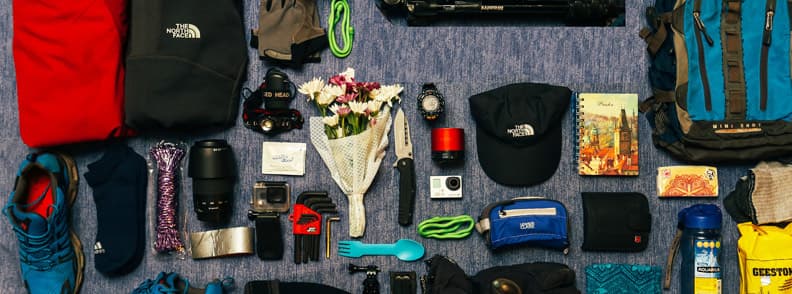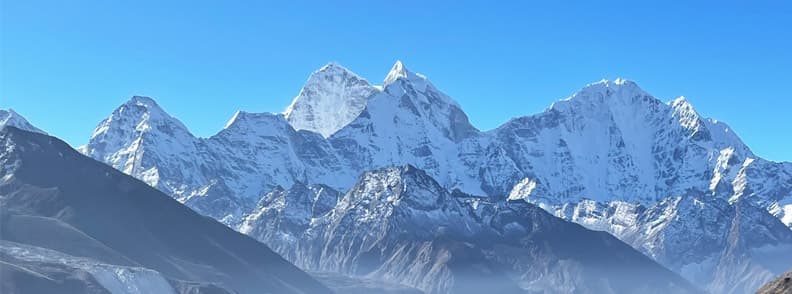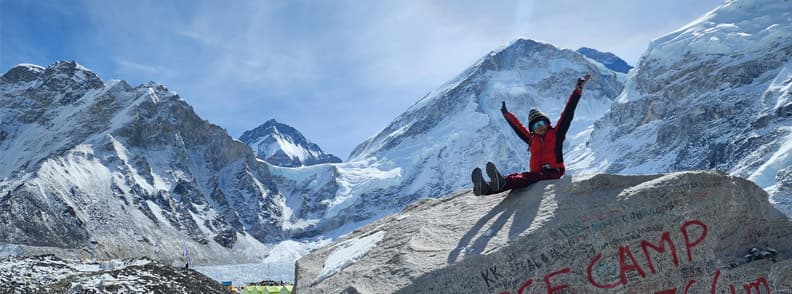Preparing for the Everest Base Camp Trek (5364m) is essential to ensure a safe and enjoyable experience. To get ready, make sure your body is strong by doing exercises like running and biking. Strengthen your legs and belly to walk better. Since you’ll be going high, take it slowly to get used to the altitude. Drink a sufficient amount of water to stay healthy during high-altitude treks.
Get your mind ready too. Learn about the trek and the people you’ll meet. Be patient and stay calm. Wear good clothes and shoes for the trip. Bring a backpack and a warm sleeping bag. Plan your trip and get the right permits.
Think about hiring a professional guide to lead you. A guide will pack a small medical kit and be sure to have travel insurance before hiking. Be kind to the environment by not leaving any trash. Respect the local people and their ways.
Get extra batteries for the Camera, bring a power bank, and be ready for simple places to stay. With good preparation, you’ll have an amazing time on the Everest Base Camp Trek!
Here’s a comprehensive guide to help you prepare for this challenging trek:

Physical fitness
1. Cardiovascular fitness
- Prior to 3 months to start the trek, focus on aerobic exercises like running, cycling, and swimming to improve cardiovascular endurance.
- Include uphill and downhill including stone steeps training to simulate the trek’s terrain.
2. Strength training
- Strengthen your legs, especially your quadriceps and calves, as you need to be able to walk long distances and ascend steep trails.
- Core and upper body strength training can help with stability and balance.
3. Endurance
- Gradually increase the duration and intensity of your workouts to build overall endurance.
- Consider practicing “hike and walk” routines to simulate trekking conditions.
Altitude acclimatization
1. Gradual ascent
- Plan your trek itinerary to allow for gradual acclimatization. Spending extra days at higher altitudes helps your body adjust to lower oxygen levels.
2. Hydration
- Stay well hydrated to help with acclimatization. Drink plenty of water throughout the trek.
3. Medication
- Consult with a healthcare professional about altitude sickness medication, such as acetazolamide, and carry it in your hiking backpack.
Mental preparation
1. Research
- Learn about the trek, its challenges, and the local culture.
- Learn basic Nepali phrases and talk with the guide.
2. Mental strength
- Prepare for long days of walking, changing weather conditions, and basic tea-house accommodations.
- Practice mindfulness and stress-reduction techniques.

Gear and equipment
1. Clothing
- Dress in layers to adapt to changing temperatures.
- Invest in good quality, moisture-wicking, and waterproof clothing.
2. Footwear
- Choose comfortable, well-fitting trekking boots with ankle support.
- Buy and get used to your shoes. Ensure they are broken in before the trek.
3. Backpack
- Use a comfortable, well-fitted backpack with the capacity to carry your essentials.
4. Sleeping bag
- Invest in a good-quality sleeping bag suitable for cold temperatures.
Logistics and permits
1. Permits
- Obtain the necessary permits, including the Sagarmatha National Park Entry Permit.
- Get a TIMS (Trekkers’ Information Management System) card.
- Obtain the Khumbu Pasanglhamu Rular Municipality Trek Card.
2. Travel arrangements
- Book your flights to and from Lukla or if you hire a local travel agency, they will arrange it all.
- Consider hiring an expert local guide and porter.
Miscellaneous tips
1. Insurance
- Get travel insurance that covers at least 5500 meters of altitude.
2. Communication
- Carry a fully charged mobile phone and consider a portable charger. Purchase a local SIM card if needed.
3. First aid kit
- Pack a basic first aid kit with essentials like painkillers, blister treatment, and any personal medications.
4. Respect local customs
- Familiarize yourself with local customs and show respect to the local communities.
5. Environmental considerations
- Follow the “Leave No Trace” principles. Dispose of waste responsibly.
Before embarking on the Everest Base Camp Trek, it’s crucial to consult with a healthcare professional, especially if you have any pre-existing medical conditions. Additionally, staying informed about the current travel regulations and weather conditions in the region is essential for a successful trek.

How difficult is the Everest Base Camp Trek?
The Everest Base Camp trek is an extraordinary adventure that brings together a fusion of challenges and awe-inspiring experiences. The journey through the Khumbu region in Nepal is renowned for its difficulty, encompassing various elements that collectively make it an ultimate test of endurance and determination.
- Altitude. The trek’s primary adversary is the ever-increasing altitude. Commencing from Lukla at approximately 2,860 meters (9,383 feet) and ascending to 5,364 meters (17,598 feet) at Everest Base Camp, trekkers are constantly challenged by thinning air. Acclimatization is pivotal to counter altitude sickness, a concern that can manifest in symptoms like headaches and fatigue.
- Length and duration. This trek is not a mere stroll but an immersive experience that spans around 12 days. The extended duration, coupled with the unpredictable weather and varied terrains, intensifies the overall complexity of the trek.
- Terrain. The trail unfolds a diverse landscape — from rocky (Stone Steps) paths and steep inclines to suspension bridges and alpine forests. The notorious Khumbu Icefall near Everest Base Camp introduces its own set of challenges with treacherous crevasses and shifting ice.
- Weather conditions. Everest’s weather is notoriously capricious. Trekkers encounter sub-zero temperatures, snowfall, and gusty winds, especially at higher elevations. Being prepared for rapid weather changes is crucial for a successful trek.
- Basic facilities. Accommodations and meals are provided in teahouses and lodges along the trail, but as you ascend, facilities become more basic and scarce. Trekkers must adapt to rustic conditions and the reality of limited resources.
- Physical fitness. The trek necessitates a commendable level of physical fitness. The daily hours of walking, combined with altitude gain and challenging terrains, demand robust endurance, strength, and cardiovascular fitness.
- Logistical challenges. The journey begins with a unique challenge — reaching Lukla. The Tenzing-Hillary Airport is renowned for its short, inclined runway, and unpredictable weather often leads to flight delays or cancellations, adding an element of uncertainty to the expedition.
Despite these formidable challenges, the Everest Base Camp trek is a pilgrimage for thousands, drawn by the magnetic allure of the world’s highest peak and the breathtaking vistas of the Himalayas. Success in this journey hinges on meticulous preparation, gradual acclimatization, and a resilient spirit that embraces the difficulties as integral parts of the remarkable tapestry that is the Everest Base Camp trek.
Route to Everest Base Camp Trek
Kathmandu – Lukla ( Flight) – Phakding- Namche Bazaar x2 (with Acclimatization day) – Tengboche – Dingboche x2 nighs (with acclimatization day) – Lobuche- Grak Shep- Everest Base Camp – Kalapatthar- Pheriche- Namche Bazaar- Lukla ( Tenzing Hilary Airport) – Kathmandu.
Everest Base Camp Trek duration and options:
- 10 days walking on the Everest Base Camp Trek
- 1-day helicopter tour of the Everest Base Camp.
Embark on an unforgettable Everest Base Camp Trek! Experienced guides ensure a safe journey through the High Himalayas. Contact them for expert advice and let them handle the details. Create lasting memories in the world’s highest peaks!

Mirela Letailleur is a Romanian travel blogger living in the South of France. She writes on The Travel Bunny travel blog about affordable travel in Europe. Creator of unique free travel guides and local travel expert. Problem solver. Wannabe coffee guru.
After this Everest Base Camp Trek guide, check out these other travel blog posts
Hiking trip essentials for stress-free travel
Unforgettable hiking adventures: exploring the West Highland Way
Hiking in Spain: Unveiling the 15 best trails for your next adventure!

